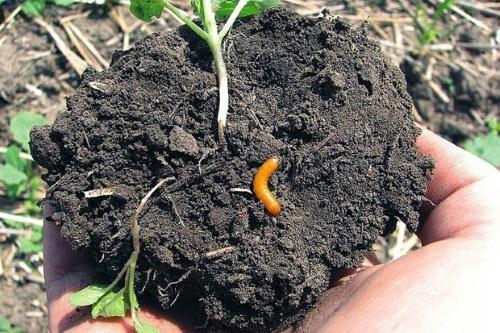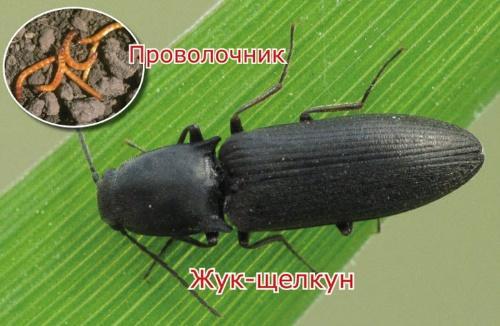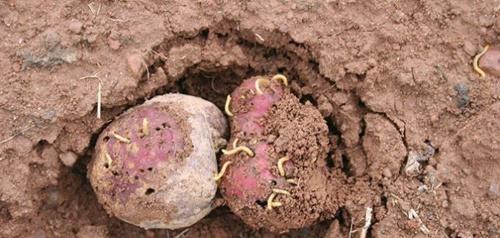How to get rid of a wireworm: folk remedies and chemicals
 The wireworm is the main enemy of the potato after the Colorado potato beetle. And if the second loves to feast on more leaves and stems, then the first mainly spoils the tubers. There is a lot of harm from it, because such potatoes are not suitable for long storage. In addition, you will not be able to take it for seeds. However, the wireworm is omnivorous, and not only potatoes suffer from it. Any root vegetable becomes food for the pest, as well as other crops. For example, sweet corn kernels. How to get rid of a wireworm? To find out, you must first understand how he lives and eats.
The wireworm is the main enemy of the potato after the Colorado potato beetle. And if the second loves to feast on more leaves and stems, then the first mainly spoils the tubers. There is a lot of harm from it, because such potatoes are not suitable for long storage. In addition, you will not be able to take it for seeds. However, the wireworm is omnivorous, and not only potatoes suffer from it. Any root vegetable becomes food for the pest, as well as other crops. For example, sweet corn kernels. How to get rid of a wireworm? To find out, you must first understand how he lives and eats.
What is a wireworm?


The larvae have the ability to rise and fall over considerable distances in search of food - up to 2 m.However, they crawl to the sides by a maximum of 18 cm.
A massive wireworm attack on an infected area occurs twice during the season. In spring and early autumn, it rises to the surface to destroy your crops.
How to get rid of a wireworm?
The fight against the pest has been going on for a long time with varying success. If you can find it at the very beginning, it is quite possible to clear the area. Otherwise, it can take years. But do not despair, but rather try the tried-and-true methods of getting rid of the wireworm.
Folk ways
 "Grandma's" methods work well against the wireworm. Most of them are based on the "trap" principle, where the larvae are lured and then collected. For example, like this:
"Grandma's" methods work well against the wireworm. Most of them are based on the "trap" principle, where the larvae are lured and then collected. For example, like this:
- Potatoes strung on sticks are buried among the plantings.
- Sprouted maize is sown 10 days before planting the nests. Then the seedlings are dug up together with the sucked larvae.
In addition, crushed shell moistened with sunflower oil can be added to the wells during planting. And after harvesting, just before the frosts, dig up the beds. The pest "thrown" to the surface together with clods of earth will die from low temperatures.
Chemistry against pests
 The wireworm prefers acidic soil and dislikes nitrogen-rich soils. This can be used by applying certain fertilizers to the site, namely:
The wireworm prefers acidic soil and dislikes nitrogen-rich soils. This can be used by applying certain fertilizers to the site, namely:
- ammonium sulfate;
- lime;
- superphosphate, previously soaked in a special solution (15 ml of Aktelik, 200 ml of acetone, 80 ml of water).
These substances will saturate the earth with nitrogen, which will force the pest to look for a new home.
If there is a little wireworm, the Prestige liquid dressing agent will help get rid of it.They are treated with tubers before planting. Unfortunately, it no longer works against the second wave (in the fall).
In conclusion, I would like to say a few words about plants that can help in this unequal struggle. The wireworm cannot tolerate clover, buckwheat, mustard, alfalfa and legumes. If they plant an infected area, this will lead to the flight of the pest or its death.